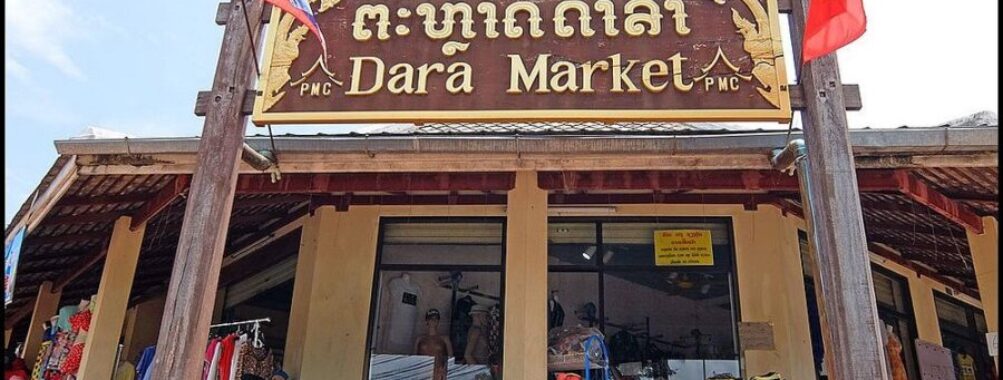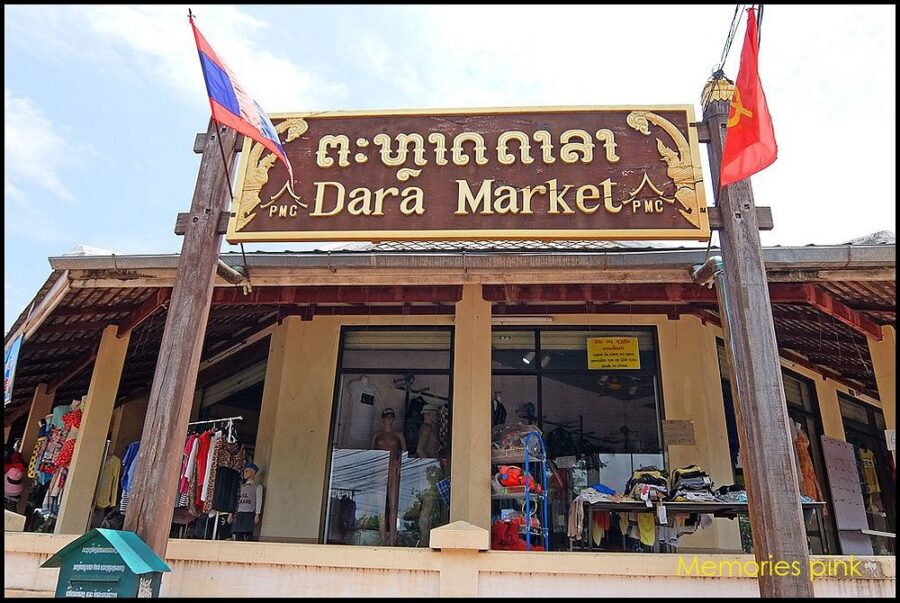
Dara Market
Table of Contents
History and Significance

Dara Market has a rich history that dates back several decades, evolving into one of the largest markets in Luang Prabang. Originally a simple trading post, it has transformed into a bustling marketplace offering everything from local handicrafts to culinary delights. The significance of this market extends beyond commerce; it serves as a gathering place for local vendors and community members, fostering connections and sharing stories. By visiting Dara Market, you’re not just shopping; you’re participating in a centuries-old tradition that celebrates Lao culture and promotes local artisans.
Over the years, Dara Market has adapted to the changing landscape of tourism in Luang Prabang. As more visitors seek authentic experiences, the market has preserved its traditional charm while expanding its offerings. Local vendors, many of whom are families that have been selling at the market for generations, provide a glimpse into the everyday lives of the Lao people. This sense of history makes Dara Market not just a place to buy souvenirs, but a significant cultural landmark that reflects the spirit of Laos.
Main Attractions and Activities
The main attractions at Dara Market include a diverse range of stalls selling everything from textiles to street food. You can find beautifully woven blouses and men’s shirts, each piece showcasing the skill of local artisans. As you wander through the aisles, the vibrant colors and intricate designs invite you to explore further. Additionally, the market boasts a variety of food stalls where you can indulge in savory grilled meats and other traditional Lao dishes, making it a true feast for the senses.
One of the unique aspects of Dara Market is its indoor section, where local handicrafts are displayed alongside fresh produce. This blend of culinary and craft offerings creates an immersive experience that captures the essence of local culture. Visitors often find themselves engaged in conversations with the vendors, who are eager to share the stories behind their crafts and food. Whether you’re looking for a special souvenir or just want to experience the local vibe, Dara Market offers countless activities that cater to all interests.
Visitor Experience
Visiting Dara Market is truly an unforgettable experience. The moment you step into this bustling market, you’re enveloped in a symphony of sights, sounds, and smells that reflect the rich culture of Laos. Local vendors enthusiastically showcase their handmade crafts and delicious street food, inviting tourists to explore and engage. The warm hospitality of the vendors adds to the overall charm, making you feel welcomed and part of the community.
As you meander through the market, the vibrant atmosphere is palpable. The hustle and bustle of shoppers, along with the enticing aroma of grilled meats, creates an electric energy that’s hard to resist. Tourists often leave with not only a bag full of unique souvenirs but also a deeper appreciation for the Lao way of life. The experience at Dara Market is about more than just shopping; it’s about connecting with the local culture and savoring every moment spent in this lively and colorful setting.
Tips for Visitors
If you’re planning a trip to Dara Market, there are a few local tips to enhance your experience. First, visit early in the morning to catch the freshest produce and the most vibrant energy. The morning market vibe is unmatched, as locals bustle about, preparing for the day. Additionally, don’t be afraid to haggle a bit with vendors; it’s part of the shopping culture here and can lead to better deals on your favorite handicrafts.
Another tip is to try the street food offerings, particularly the savory grilled meats that are a staple at the market. Be adventurous with your choices; you might discover a new favorite dish! Lastly, take your time to explore every stall, as each one tells a story and offers a glimpse into the rich tapestry of Lao culture. Remember to engage with the vendors; they often share fascinating insights about their crafts and the culture surrounding them, making your visit even more memorable.
Accessibility and Facilities
Dara Market is conveniently located along Sisavangvong Road, making it easily accessible for both locals and tourists. The market is primarily on flat ground, which is great for those with mobility challenges. While there are no extensive facilities like large shopping malls, the market does offer basic amenities such as restrooms and areas to sit and enjoy your food. It’s advisable to wear comfortable shoes, as you’ll likely be walking around for a while.
Furthermore, the market atmosphere is generally family-friendly, allowing visitors of all ages to enjoy the vibrant scene. If you’re visiting with children, there are often various snacks and treats that will delight them, making it a fun outing for the whole family. Overall, the accessibility and simple facilities at Dara Market contribute to a pleasant shopping and cultural experience, allowing everyone to take in the sights and sounds of this local gem.
Unique Features
One of the unique features of Dara Market is its blend of traditional and modern shopping experiences. Unlike many global shopping centers, this market is deeply rooted in local culture, showcasing handmade crafts and traditional Lao textiles. The stalls are filled with unique items that you won’t find elsewhere, such as intricately woven sinhs, which are traditional Lao skirts, and other authentic souvenirs that reflect the region’s rich heritage.
Additionally, the market’s layout promotes a sense of community, with local vendors often sharing space and collaborating on events. This not only enhances the shopping experience but also fosters a sense of camaraderie among the vendors. Visitors often appreciate the personal touch that comes with shopping directly from the artisans. This unique atmosphere, combined with the rich array of products, makes Dara Market a standout destination in Luang Prabang.
Overall Impressions
Overall, Dara Market leaves a lasting impression on its visitors. The vibrant atmosphere, rich cultural offerings, and friendly local vendors create a memorable experience that is hard to forget. Many tourists leave the market feeling enriched, not only by their purchases but by the interactions they have had with the locals. It’s a place where you can truly feel the heartbeat of Luang Prabang and the essence of Lao culture.
The blend of sights, sounds, and flavors at Dara Market encapsulates what makes this city so special. From the handmade crafts to the culinary delights, every aspect of the market contributes to a comprehensive experience that showcases the best of Laos. Whether you’re a seasoned traveler or a first-time visitor, the memories made at Dara Market will surely linger long after you’ve left its bustling stalls.
Pros and Cons
Like any destination, Dara Market has its pros and cons. On the positive side, the market offers a fantastic opportunity to experience local culture and interact with friendly vendors. The variety of handmade crafts and street food is impressive, making it a great spot for shopping and dining. Additionally, the location along Sisavangvong Road makes it easily accessible for tourists exploring Luang Prabang.
On the flip side, the market can get crowded, especially during peak tourist seasons. This bustle can make it challenging to navigate through the stalls, particularly if you’re looking for something specific. Also, while many vendors speak some English, communication may sometimes be a barrier. However, overcoming these minor inconveniences is well worth the vibrant experience you’ll gain at Dara Market, making it an essential stop in your Luang Prabang adventure.
Location
Places to Stay Near Dara Market
Find and Book a Tour
Explore More Travel Guides
No reviews found! Be the first to review!